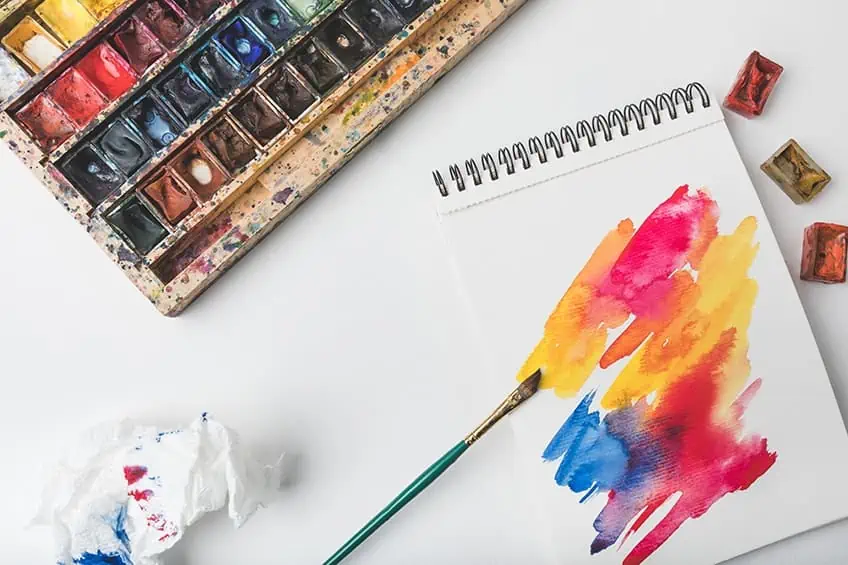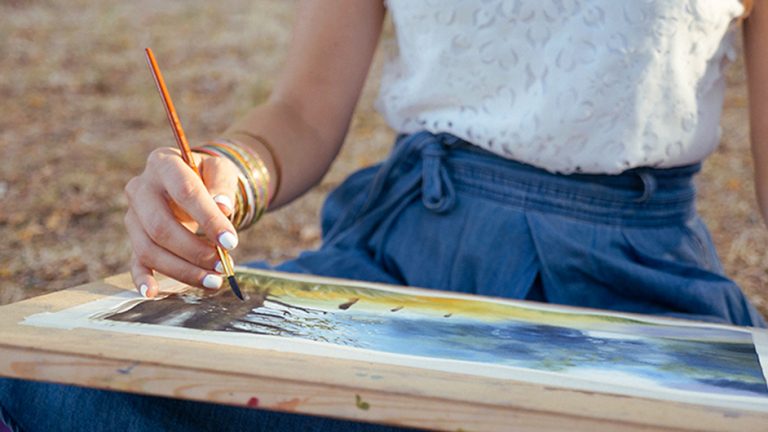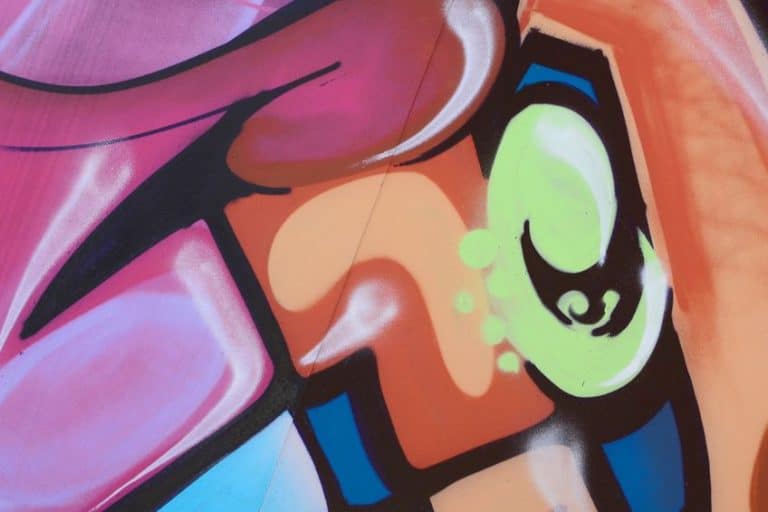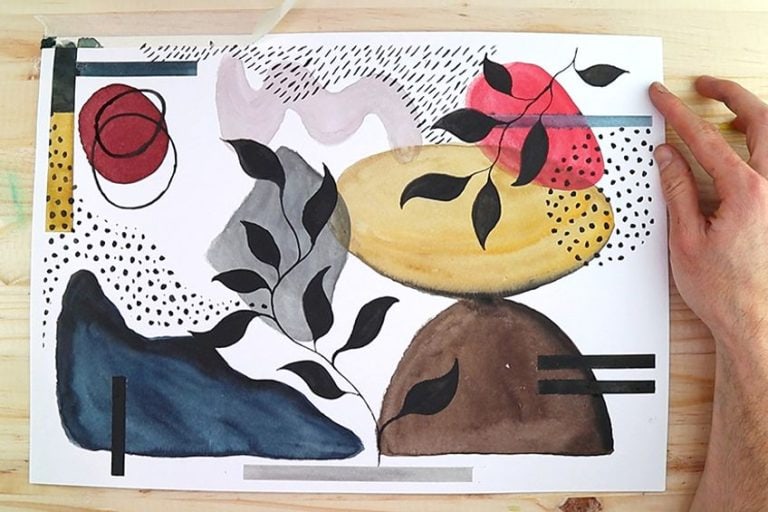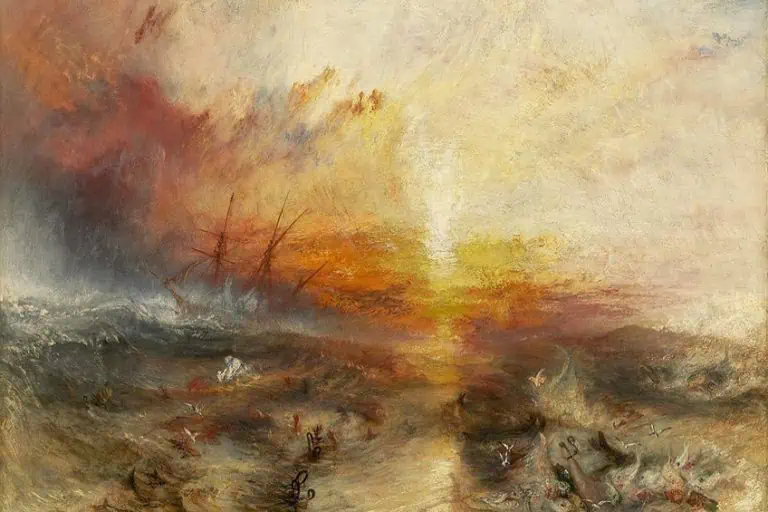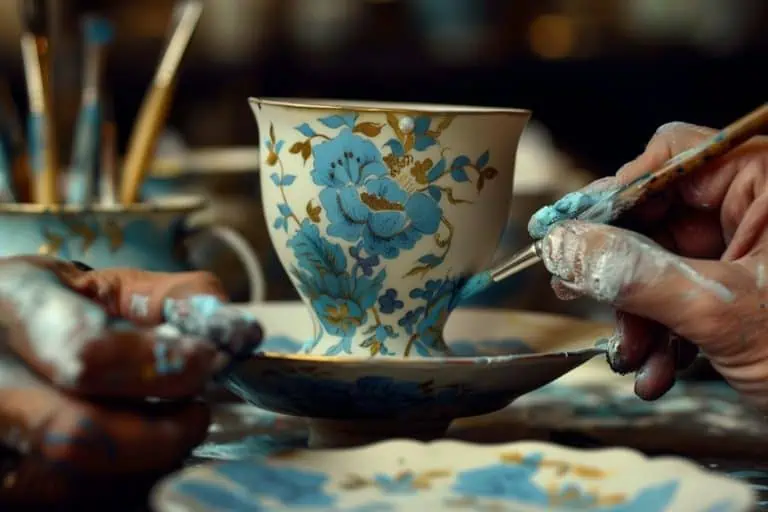What Is a Watercolor Block? Complete Guide for Using Watercolor Pads
This post may contain affiliate links. We may earn a small commission from purchases made through them, at no additional cost to you.
Watercolor painting is an art form that is practiced by many professionals but is also a hobby that many DIY artists love to enjoy. Watercolors are also loved and enjoyed by many kids and families together. However, it is one of those art forms that are difficult to master, so beginners might either quit before they learn to enjoy it, or they will be frustrated by the mistakes they make. So, in this article, we are going to try and help you appreciate the art of watercolors, and help you understand certain aspects like what is a watercolor block?
Table of Contents
- 1 What is a Watercolor Block?
- 2 Other Types of Watercolor Paper
- 3 Factors to Consider When Buying Your Watercolor Block
- 4 Can You Use a Watercolor Block on Both Sides?
- 5 Conclusion
- 6 Frequently Asked Questions
What is a Watercolor Block?
The most important part of watercolors is the paper you use for your artwork. A watercolor block is the type of paper you use to produce a special watercolor art piece. This watercolor block consists of several sheets of paper bound together on all four sides, using a certain type of rubber material coating.
This means you can paint on the top sheet of paper, and once your paint has dried, you can remove the top sheet with a palette knife, which is inserted into a small gap in the binding. You then run the knife around all four edges, enabling you to remove your painted sheet from the block. The idea of gluing all four of the sides together means you do not need to stretch your paper before you start your painting. The stretched paper will then produce a nice firm and flat surface.
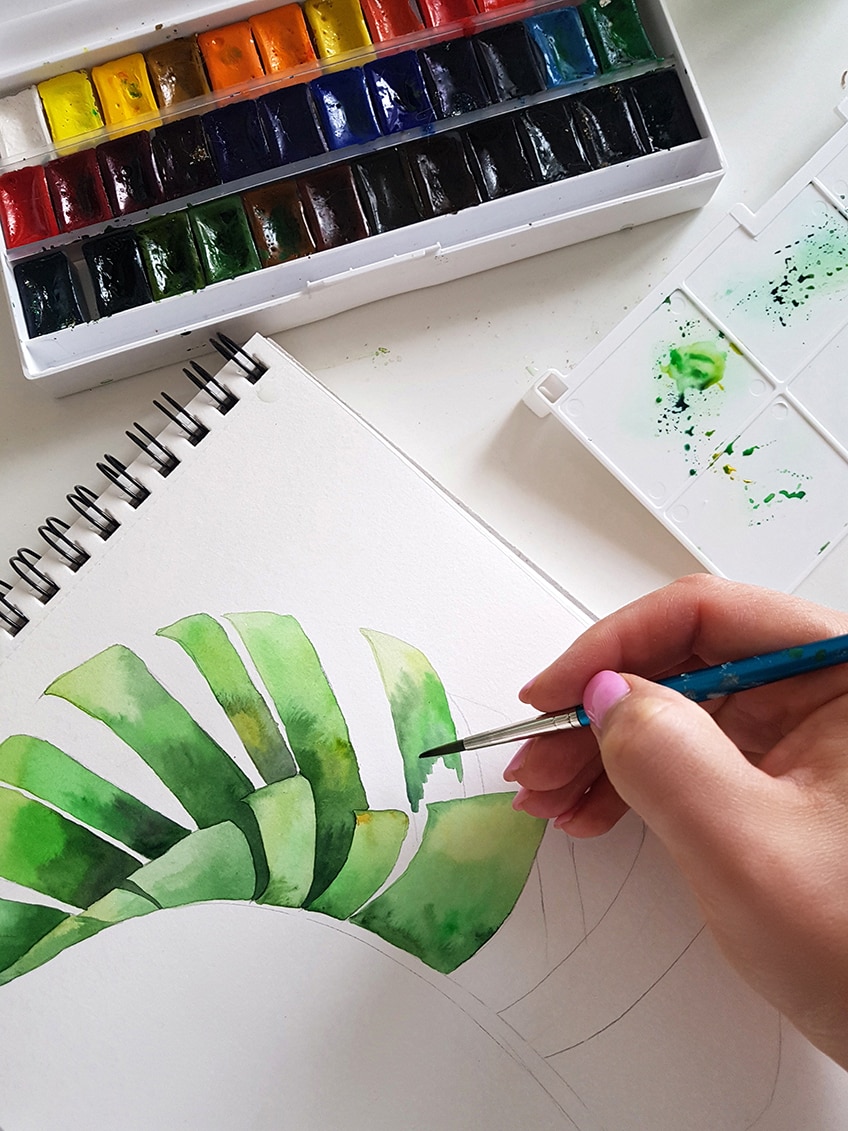
The Pros and Cons of Using a Watercolor Block
Like any other product, they all have their advantages and disadvantages, and this is also true with a watercolor block. However, once you understand its purpose and how to use it properly, there is no limit to what you can do with it.
Advantages of Using Watercolor Blocks
One of the main advantages of using a watercolor block is that you do not have to first stretch your paper before painting, to avoid it buckling as the paper shrinks when it dries. The process of stretching your paper involves getting the paper wet and then attaching it to a wooden board with staples or a special type of tape. So, using a watercolor block saves you time as you can start painting straight away. This is one of the main reasons artists use a watercolor block when painting outside, as you do not have to carry all the equipment with you to stretch the paper.
Another advantage of using watercolor blocks is that you can paint right up to the edge of the paper, and there is no need for any trimming. When you stretch your paper by hand, whether you use staples or tape to secure it to the board, you will be left with small holes from the staples and the tape will leave a white border around the painting. All of this will have to be trimmed off, wasting some of the paper in the process.
If you use a watercolor block for your painting, the paper is less likely to buckle or crease as the paper has a solid and rigid backing. This is another good reason why artists use the watercolor block for painting outdoors, as you do not have to worry that you will damage your painting while in transit.
Disadvantages of Using Watercolor Blocks
There seems to be a common complaint from artists when using watercolor blocks, at times the paper seems to separate from the backing board, and then all the sheets fall apart. This is a major disadvantage as now you lose all the benefits of a watercolor block, and you will have to go separate each sheet of paper and stretch them by hand. To solve this problem, you can try taking some acrylic medium and paint around the edges to seal the paper.
Another disadvantage of the watercolor block is that you can paint only one each time. You have to wait for it to dry and remove it before you can carry on painting, which may limit your time tremendously. You can solve this problem by purchasing more than one watercolor block. You can use one watercolor block, and while it is drying, you can continue on the spare one. This will also guarantee enough paper to work on all the time. Many professional artists have complained that when using the watercolor block, the paper is not as tight as it is when done by hand. However, if you are only beginning to learn, this should not be a problem.
How to Detach Watercolor Paper From a Watercolor Block
A watercolor paper block has a rubber or plastic type of coating around all four edges of the block. Some manufactures make use of a black material which is very helpful as you can see it very clearly. However, many other watercolor blocks come with a clear material.
There is a small gap in the coating of about a half-inch; some manufacturers place it on the front of the block in the center, while others place it in the front left-hand corner. This gap is where you can insert a palette knife to remove your painting from the block, but you need to first make sure your paint is dry before you attempt to remove it.
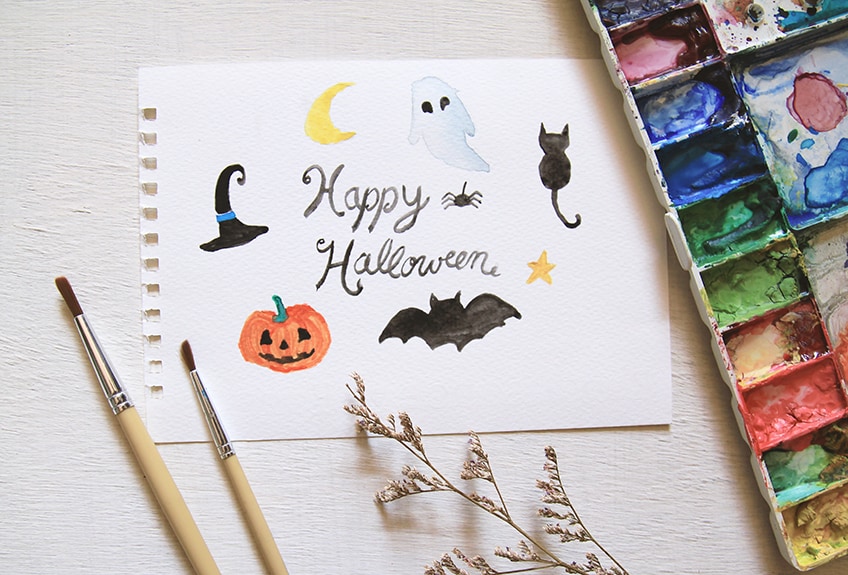
Once you have inserted the palette knife into the gap, run the knife around the entire edge of the block, which will loosen the painting from the block. You need to do this very carefully, as you do not want to cause any damage to the sheet of paper underneath. Instead of using a palette knife, you can also use a letter opener or some other instrument that has no sharp edges. Some artists use a guitar pick as it is small, has round corners with no sharp edges, while others use an old credit card.
You need to do this job very carefully because if you accidentally damage the sheet underneath, then a dark line will show up the minute you apply your first wash. So, make sure you do it gently and use the correct instrument.
Other Types of Watercolor Paper
The watercolor paper block is the best choice to use for your watercolor painting, however, there are also other forms of watercolor paper available. You can purchase watercolor paper in separate sheets, that are bound at the top with a wire spiral or otherwise glued at one end only.
This allows you to paint on your paper while it is still attached to the pad, or you can tear it off the pad neatly and easily one sheet at a time. Where the wire spiral-bound paper is concerned, the paper is usually perforated, so when you tear it off, it comes away clean without the spiral section attached.
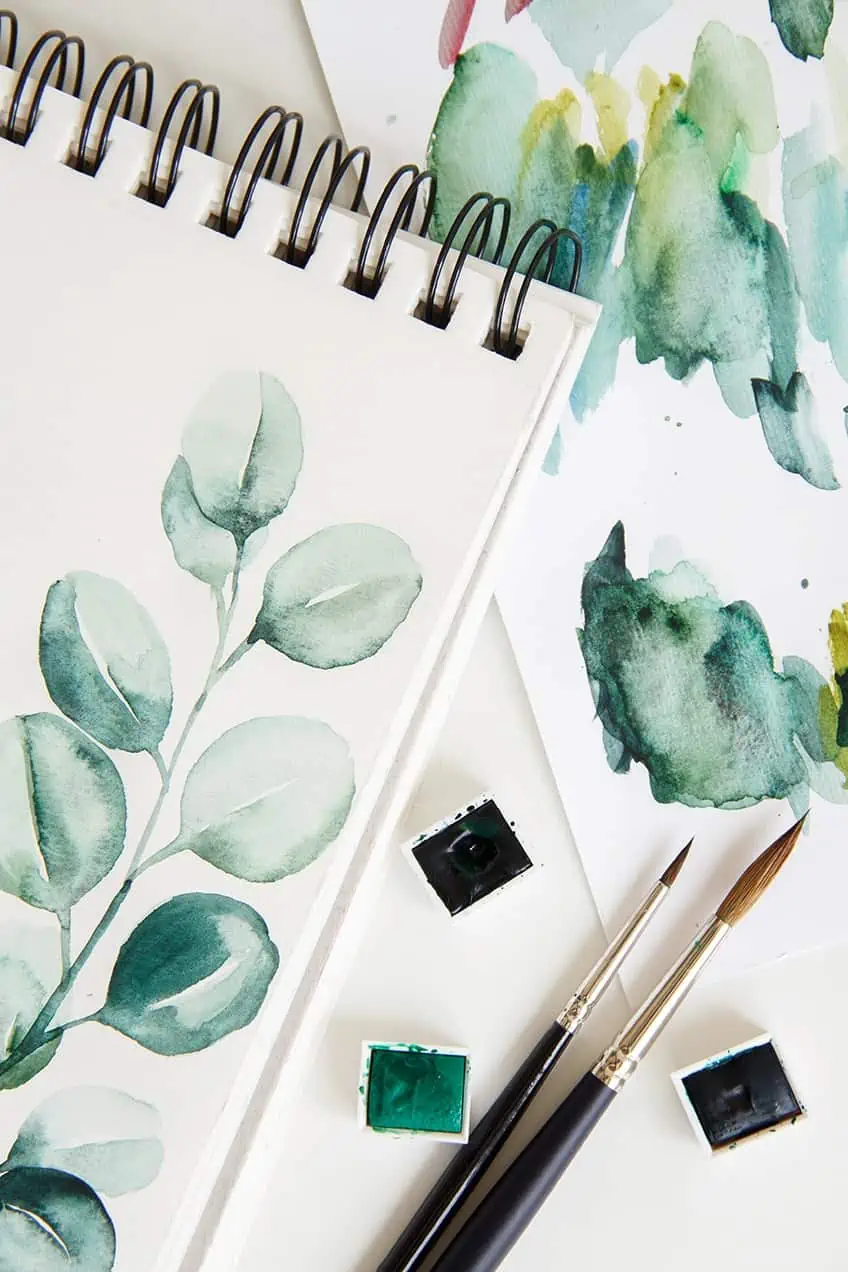
Once you have finished your painting and you want to frame it, the paper has a deckled edge on all four sides that gives you a textured matte finish. You can frame just like that, or you can use scissors to cut the paper to the size you want to fit your frame. If you want to paint a very large painting like a mural, for example, there are rolls of paper that you can buy. These rolls of paper usually come in sizes like 44 to 56 inches wide and are 10 yards long.
Factors to Consider When Buying Your Watercolor Block
When you go out to purchase your watercolor block, it is advisable to buy the best paper you can afford as there is a vast difference between professional or artist-grade paper, and studio or student grade. The endless product choices can be mind-boggling, as you need to decide between hot or cold-pressed paper, rough paper, or do you want to buy a pad, block, or sheet form? Let us make this decision much easier for you so that you can just get down to the business of painting.
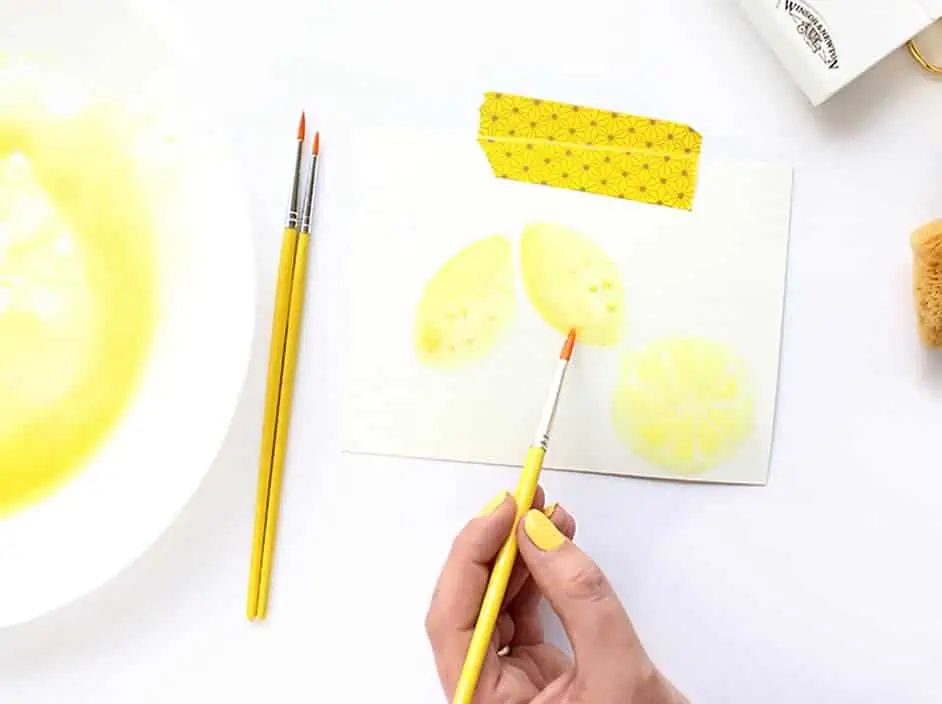
The Texture of the Watercolor Paper
The paper’s texture is very important as it needs to be in line with what you intend to do, but the choice of paper is entirely up to you. There are three different types of paper textures that you can choose from, they are cold-pressed, hot-pressed, or roughly finished texture. Let us now explain all three of these textures for you.
Cold-Pressed Watercolor Paper
This type of textured watercolor paper has a somewhat bumpy texture and falls in-between the hot-pressed and rough watercolor paper, and is considered the best choice for your watercolor painting experience. The paper absorbs water a lot faster than hot-pressed paper, which lends itself to being a trifle messy, so your paint will dry much faster. Unfortunately, if you make a mistake, it is more difficult to fix but gives you more control over the watercolor paint.
The bumps in the texture of this paper for watercolor help absorb the paint’s pigment better than hot-pressed paper but will result in the colors not being as bright. However, it does provide you with a more durable piece of artwork and is the right choice if you are looking for a more textured look.
Hot-Pressed Watercolor Paper
Hot-pressed watercolor paper is a lot smoother and finer, which allows your paint to dry fairly quickly. The paper feels much like drawing paper and is perfect for large painting projects or botanical and portrait paintings, as it gives you a smooth wash even if you use one or two colors. This type of paper does not work well for multiple layers of paint, and the water is not as easily absorbed as with cold-pressed paper and may result in the pooling of your paint. However, it does give you time to experiment with your colors until the paint finally dries.
Due to the paper being smooth, it is recommended that you use pens or ink wash for any fine details on your painting, and if you find you have made a mistake, the hot-pressed paper will give you time to fix the problem before the paint dries properly. The finished painting will show you much brighter colors because the paint pigment is not completely absorbed into the paper but remains more on the surface of the paper. The only disadvantage of this is that the paint can begin to fade a lot quicker.
Rough Watercolor Paper
The rough paper for watercolor has a more textured surface, which gives the paint a speckled effect. The paint seems to settle on the raised surfaces making it very difficult to control your brush strokes. The raised portions of this paper appear to be more textured than the cold-pressed paper, which has a softer surface type. The rough paper absorbs the paint very easily and will give you a beautifully textured effect, but is not recommended for use where fine detail is required. Also for watercolor pencils, these rough watercolor papers can make an interesting effect.
Watercolor Paper Weight
Watercolor paper is classified into three weight classes, and the weight signifies the thickness of the paper. The weight is recorded in pounds per ream or grams per meter, so ordinary copy paper which is around 24 pounds per ream measures 70 grams per meter, and as such, should never be used as watercolor paper. The three weight classes include:
- Light: 90 pounds per ream or 190 grams per meter
- Medium: 140 pounds per ream or 300 grams per meter
- Heavy: 300 pounds per ream or 640 grams per meter
Watercolor paper is classified according to weight and is measured in pounds per ream, where a ream is usually composed of 500 sheets. However, some of the sheets in the ream can be a different size, so this makes this type of comparison of the right paper very difficult to ascertain.
Do not lose heart as watercolor paper is also gauged according to grams per square meter, where a meter always remains a meter irrespective of the size of the paper. So, this form of comparison is by far the best in helping you choose the right type of paper for your watercolors.
Most professional watercolor painters will tell you to use medium or heavyweight paper as any paper lighter than this, first needs to be stretched and taped or fixed to a watercolor paper board. Stretching the paper means you pre-soak it and then secure it to a board to prevent the paper from buckling when the water is applied to it. The heavy-weight paper is used mainly by painters that enjoy using very wet watercolors.
The paper you use will react by the amount of water you use with your paints, the thinner paper seems to bend or distort, while the thicker paper can manage a large amount of water without buckling or bending. You just need to experiment with the different weights of paper until you find the right one for your needs or purposes.
Many believe that for watercolors you need to use very thick and heavy paper, but not only are the thicker papers more costly, but they also absorb a lot more water. This can cause problems as it is far better to allow your pigments to float.
The absorption principle that works with paper towels does not necessarily work with watercolor paper, but the quality of the paper outclasses the thickness or the weight. The quality of the paper depends on the manufacturing process, the pulp composition, and much more, so do not rely on the weight or the thickness of the paper only, but rather focus on how it works for you. This means that if you find 105 grams per square meter paper, and you like what it does, then leave the heavy paper alone and stick with what works for you.
Watercolor Paper Format
You can purchase watercolor paper in pads that are glue or spiral-bound, blocks or sheets. This is a decision you need to make, and it all depends on what you want to do with the watercolor paper as its format can determine what type of art piece you want to produce.
Watercolor Paper Pads
This format of watercolor paper is mostly found in student-grade papers. The pads are either taped or wire bound on one side so that you can tear off the paper when you are finished with it or just flip it over and continue on the next sheet. This form of watercolor paper is the cheapest one of all.
Watercolor Block Paper
All professional-grade watercolor paper will come in block form and is a lot more convenient, as you do not have to stretch the paper first, and is glued down on all four sides keeping the paper stable. Once you have finished your painting, wait for it to dry, and then simply remove the sheet from the block with a palette knife or other blunt instrument. You can then carry on with your painting.
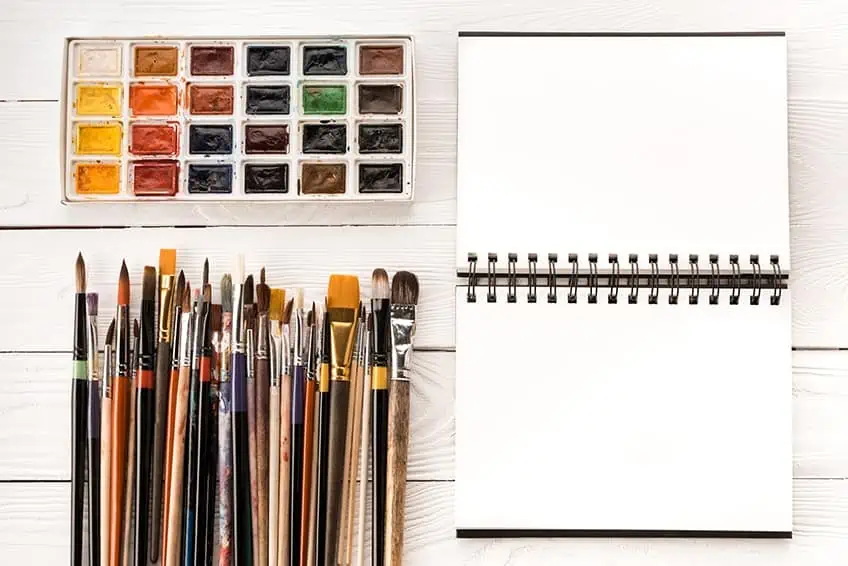
Watercolor Paper Sheets
This form of watercolor paper is ideal when you want to paint scenery and the pads or blocks are too small. The paper used for this watercolor paper is usually of the best quality. If you want to save some money, it may be a good idea to buy a couple of sheets of watercolor paper and then cut them to the size you need.
Watercolor paper sheets come with a deckled edge which makes the edge of the paper look like a natural tear and is what many artists are looking for. Remember that if you cut the sheets to the size, you will lose the deckled edge.
Watercolor Paper Quality
Watercolor paper is supplied in a diversity of quality grades, ranging from student to professional grade. The quality of the paper will affect the way the paint performs and will also show you what watercolor brushes are the best to use. The making of the paper will be either handmade, machine-made, or mold-made.
| Type of Paper | Description | Student Grade | Prof. Grade |
| Handmade Paper | You can easily detect this type of paper as it will have four deckled edges with randomly spread out paper fibers which give the paper its strength | ✘ | ✔ |
| Mold Made Paper | This paper has only two deckled or natural edges and the paper fibers are also randomly spread but it is not as strong as the handmade paper | ✘ | ✔ |
| Machine Made Paper | This paper is made with a paper machine that spreads out the paper fibers all in the same direction, and although the edges look natural most of them are trimmed | ✔ | ✘ |

It is a lot cheaper to produce machine-made paper, so it will be less expensive to buy. However, most of the professional watercolor paper is mold-made. We recommend that you buy the best quality watercolor paper, even if it is more expensive as it will save you a lot of trouble in the long run. Whether you are a professional or a beginner watercolor artist, you should consider a paper that is 100 percent cotton, acid-free, with a neutral pH level. The paper should also not fade or yellow over time.
Student-Grade Watercolor Paper
This type of watercolor paper is made from wood pulp and cellulose and does not absorb water as well as the 100 percent cotton paper does, so you will find different results when painting. The paper is usually machine-made, and the process used gives it a different type of surface finish. This type of watercolor paper is never archival, which means that over time the paper will yellow.
Professional-Grade Watercolor Paper
This type of paper is made from 100 percent cotton and is often referred to as ‘cotton or rag paper’, and absorbs water amazingly well, and will give you that watercolor look you are after. It is usually mold-made with a beautiful toothy texture, is acid-free with a neutral pH level, and is also archival. However, handmade watercolor paper is regarded as the very best and highest quality.
Can You Use a Watercolor Block on Both Sides?
Is there a front, a back, a top, a bottom, a right, or a wrong side of the paper? Each side of the ordinary watercolor block paper is the same, but depending on how it is manufactured, some of the blocks are made from dual-purpose paper, where one side is smooth and the other is textured. However, you can still work on either side if you wish.
You also get a watercolor block that is only prepped for painting watercolors on one side, and the back is usually reserved for mounting purposes. If you are really into saving some money, then there is no problem using both sides of your watercolor paper. You also do not have to trim off the deckled edge, but you can go ahead and paint over it and so make use of the entire sheet.

Conclusion
If you are a professional watercolor painter, you might like your paper stretched tight if you normally use a lot of water when you paint. However, if you are a beginner, then the watercolor block is the best and easiest choice for you. This means you do not have to first go and stretch your paper, and you can exert all your energy on your painting and start straight away. Then, as you gain more experience with your watercolor painting, you can try to stretch your paper as the professionals do.
Frequently Asked Questions
What Is a Watercolor Block?
A watercolor block is a pack of watercolor paper that has been trimmed and placed on top of each other. This stack of paper is then placed on a backing with glue, which is then also used to seal all sides of the pie of paper. This type of watercolor paper does not have to be stretched or trimmed and you can use the entire surface to the edge.
Is There a Difference Between a Watercolor Block and Pad?
A paper block contains a stack of trimmed watercolor paper placed onto a backing and is glued on all four sides. A watercolor paper pad is only attached or glued together on one side and each piece of paper can easily be removed by hand.
Are Watercolor Blocks Expensive?
Yes, when compared to other types of watercolor paper, they can be more costly. This is due to the quality of paper used as well as the process and materials involved to produce the product.
How Do You Remove Watercolor Block Paper?
The paper on a watercolor block is glued or bound on every side and cannot simply be torn off like a pad of paper can. You will need to use something relatively sharp to remove the paper. Preferably a tool like a palette knife or letter opener as a sharp object might damage the paper or injure the user.
Matthew Matthysen is a multidisciplinary artist. He completed his fine art degree, majoring in History of Art and Contemporary Drawing Practice at the University of Witwatersrand, South Africa. Before joining acrylgiessen In 2020, Matthew worked part-time as an art teacher at Reddford Blue Hills High school. Matthew creates drawing and painting tutorials for acrylgiessen and captures them not only photographically and in written form. He also records the creation of his works in his own creative studio as in video format, from which later with a voiceover and a video editor also drawing tutorials for the Youtube channel of acrylgiessen are created.
Learn more about Matthew Matthysen and about acrylgiessen.
